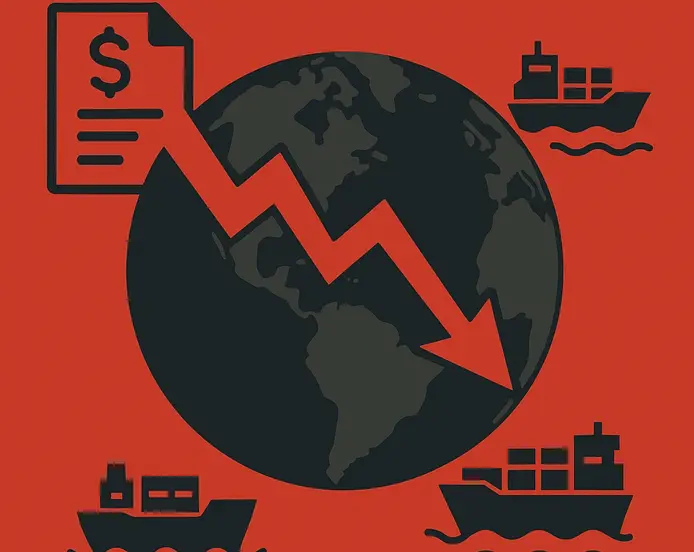The Escalating Trade War Landscape
President Trump’s latest tariff threats have sent shockwaves through global markets, creating unprecedented trade turbulence that threatens to reshape international commerce. The administration’s aggressive stance on countries purchasing Russian energy, combined with looming levies on semiconductors and pharmaceutical imports, has created a perfect storm of economic uncertainty that could have far-reaching consequences for businesses and consumers worldwide.
The president’s announcement that higher tariffs would be imposed on nations buying energy from Russia, coupled with his promise to announce semiconductor and pharmaceutical import levies within the next week, represents a significant escalation in the ongoing trade tensions that have characterized his administration’s economic policy approach.
Switzerland’s Desperate Washington Mission
The Swiss president’s arrival in Washington represents a last-ditch effort to address the crippling 39% tariff rate imposed by the Trump administration. This unprecedented tariff level has sent shockwaves through Switzerland’s export-driven economy, forcing the country’s leadership to seek immediate relief through diplomatic channels.
Switzerland’s predicament highlights the broader challenges facing nations with significant trade surpluses with the United States. The country’s business model, built on free trade and bilateral agreements, now faces existential threats as the Trump administration targets what it perceives as unfair trade practices.
Looking to Hire Fast?
Hiring managers can now post jobs for free on WhatJobs and connect with millions of jobseekers.
India’s Unexpected Targeting
Perhaps most surprising in this latest round of tariff threats is the administration’s laser focus on India. Despite the historically positive relationship between President Trump and Prime Minister Narendra Modi, the United States is now targeting India “very substantially” over its Russian energy purchases.
This shift in strategy raises critical questions about the future of U.S.-India relations and the broader geopolitical implications of using trade policy as a tool for foreign policy objectives. India’s continued purchases of Russian energy, despite international pressure, have placed the country in the crosshairs of American trade policy.
The targeting of India represents a significant departure from previous administration approaches, where the country was often viewed as a strategic partner in countering Chinese influence in the Asia-Pacific region. This new stance could have profound implications for regional security dynamics and economic cooperation.
The Pharmaceutical Industry Under Fire
Trump’s recent escalatory language regarding pharmaceuticals has created particular concern within the healthcare sector. The administration’s focus on drug pricing and the fact that many U.S. companies manufacture pharmaceuticals in Europe for export back to the United States has created a complex web of economic and political considerations.
The pharmaceutical industry’s global supply chains now face unprecedented scrutiny, with companies scrambling to understand the potential impact of new tariff regimes on their operations and pricing structures. This uncertainty comes at a time when healthcare costs remain a critical concern for American voters and policymakers.
Market Reactions and Economic Implications
The financial markets have responded to these tariff threats with increased volatility, as investors struggle to assess the potential impact on global supply chains and corporate profitability. The uncertainty surrounding trade policy has created a challenging environment for businesses trying to plan their operations and investment strategies.
According to recent market analysis from Bloomberg, the combination of tariff threats and disappointing economic data has created a complex backdrop for monetary policy decisions. The Federal Reserve now faces the challenge of navigating an economic landscape where trade policy uncertainty compounds existing concerns about inflation and growth.
Labor Market Concerns Amid Trade Tensions
The latest jobs report revealed concerning signs of labor market weakness, with significant downward revisions to previous months’ data. This development has added another layer of complexity to the economic outlook, as policymakers must balance concerns about inflation with evidence of slowing employment growth.
The three-month payroll trend now shows a marked slowdown, bringing payroll growth closer to levels that align with other economic indicators. This convergence suggests that the labor market may indeed be entering a period of moderation, which could influence Federal Reserve policy decisions in the coming months.
Central Bank Challenges in a Turbulent Environment
Central bankers worldwide now face unprecedented challenges as they attempt to navigate an economic landscape characterized by trade policy uncertainty, inflationary pressures, and slowing growth. The Bank of England, European Central Bank, and Federal Reserve all confront difficult decisions about monetary policy in an environment where traditional economic models may not fully capture the impact of trade disruptions.
The Bank of England’s upcoming decision on interest rates exemplifies these challenges, as policymakers must weigh evidence of labor market slack against persistently high inflation rates. The three-way vote expected at the Bank of England meeting reflects the complexity of current economic conditions and the difficulty of achieving consensus on appropriate policy responses.
The European Perspective on Trade Tensions
European policymakers have expressed growing concern about the impact of U.S. trade policy on transatlantic relations and global economic stability. The European Union’s recent sanctions package targeting refineries in India and Chinese banks for their support of Russia’s war in Ukraine demonstrates the complex interplay between trade policy and geopolitical objectives.
The narrative of punishing countries for supporting Russia has gained traction not only in Washington but also in European capitals, creating a coordinated approach to economic sanctions that could have far-reaching implications for global trade patterns.
Corporate Earnings in a Trade War Environment
Corporate earnings reports have revealed a bifurcated picture of the global economy, with some companies demonstrating remarkable resilience while others struggle to adapt to changing trade conditions. Profit margins remain healthy in many sectors, suggesting that companies may be able to absorb some tariff costs without passing them entirely to consumers.
However, the early signs of tariff-related inflation are beginning to emerge, with companies reporting increased costs for imported materials and components. This trend could accelerate as the full impact of new tariff regimes takes effect, potentially complicating the Federal Reserve’s efforts to manage inflation expectations.
The Future of Global Trade Relations
As the Trump administration continues to pursue its aggressive trade policy agenda, the international community faces critical decisions about how to respond to these challenges. The traditional mechanisms of international trade cooperation may need to evolve to address the new realities of economic nationalism and strategic competition.
The coming weeks and months will likely see continued volatility in global markets as traders and investors attempt to price in the uncertainty surrounding trade policy developments. The impact of these policies on economic growth, inflation, and employment will be closely monitored by policymakers and market participants alike.
Navigating Uncertainty in the Job Market
For job seekers and employers alike, the current trade policy environment creates both challenges and opportunities. Companies may need to adapt their hiring strategies to account for potential supply chain disruptions and cost increases, while workers may need to develop new skills to remain competitive in an evolving economic landscape.
The current labor market trends suggest that while overall employment growth may be slowing, opportunities remain in sectors that are less directly impacted by trade policy changes. Technology, healthcare, and domestic manufacturing sectors may offer relative stability in an uncertain economic environment.
The Role of Technology in Trade Policy
Technology companies find themselves at the center of many trade policy debates, with semiconductors and other high-tech products becoming increasingly important in international trade negotiations. The administration’s focus on semiconductor imports reflects the strategic importance of these technologies in both economic and national security contexts.
Companies in the technology sector must now navigate a complex regulatory environment where trade policy, national security concerns, and economic competitiveness all play important roles in shaping business decisions. This complexity creates both challenges and opportunities for innovation and growth.
Conclusion: Adapting to a New Trade Reality
The current trade policy environment represents a fundamental shift in how nations approach international commerce and economic cooperation. The Trump administration’s aggressive use of tariffs as a tool of foreign and economic policy has created a new reality that businesses, investors, and policymakers must learn to navigate.
As the global economy continues to adapt to these changes, the importance of strategic planning and risk management has never been greater. Companies and individuals alike must remain vigilant about developments in trade policy and be prepared to adjust their strategies in response to changing conditions.
The coming months will likely bring continued volatility and uncertainty as the full impact of these trade policy changes becomes clearer. However, those who can successfully navigate this challenging environment may find significant opportunities for growth and success in the new global trade landscape.




